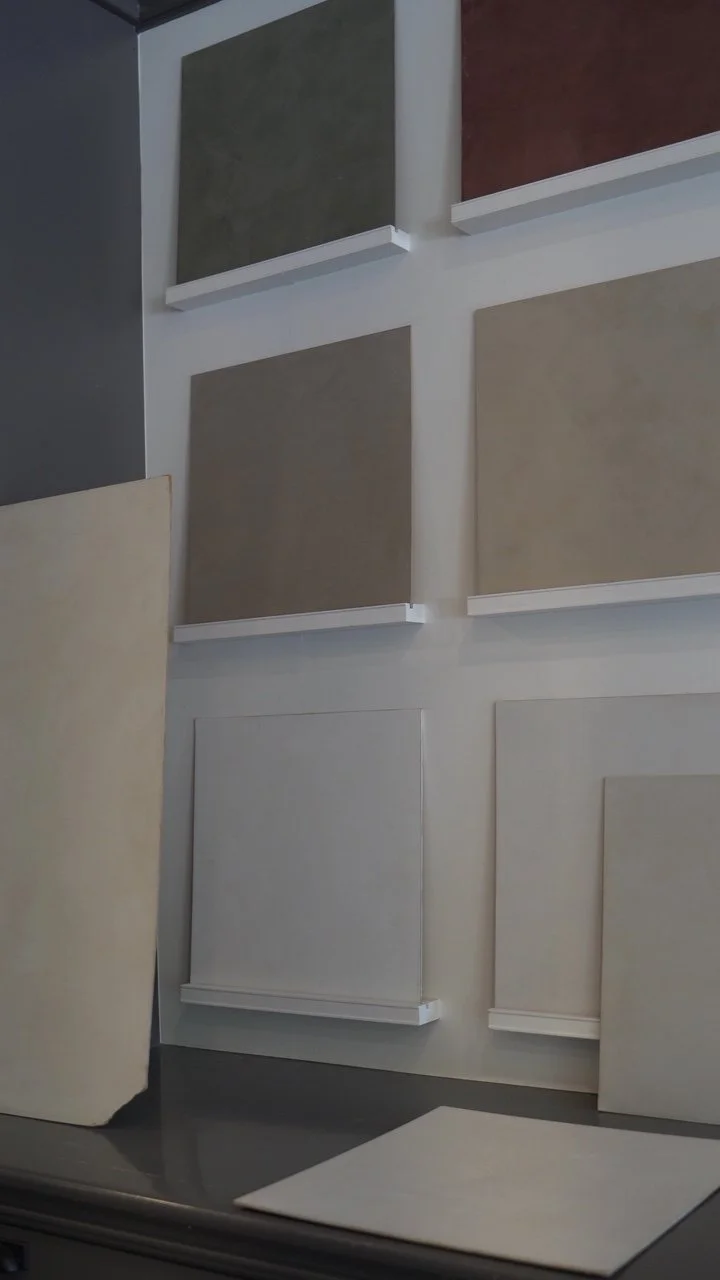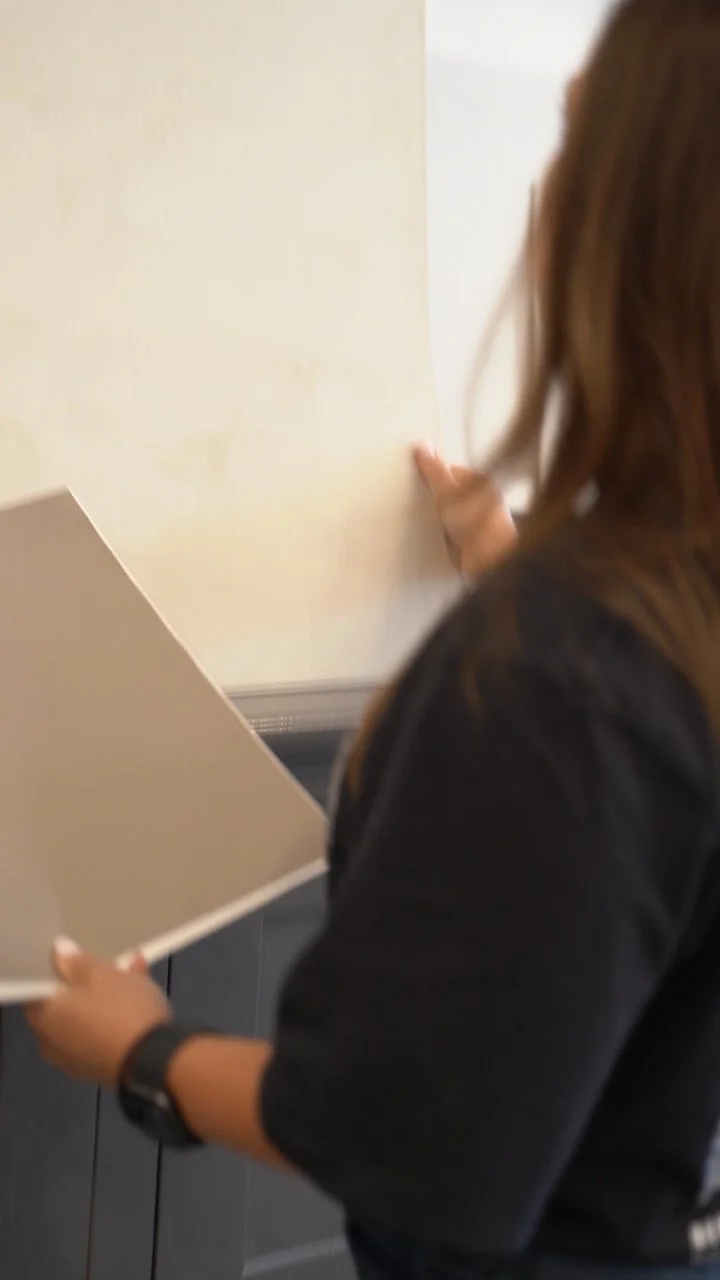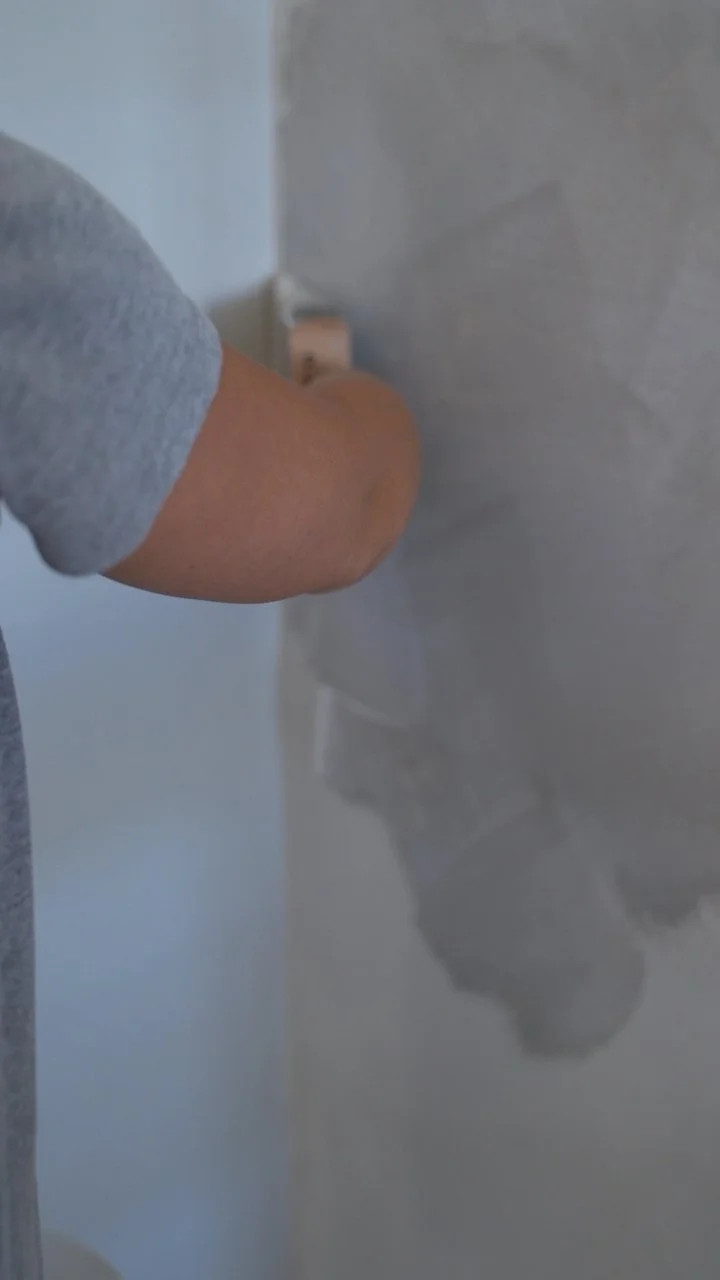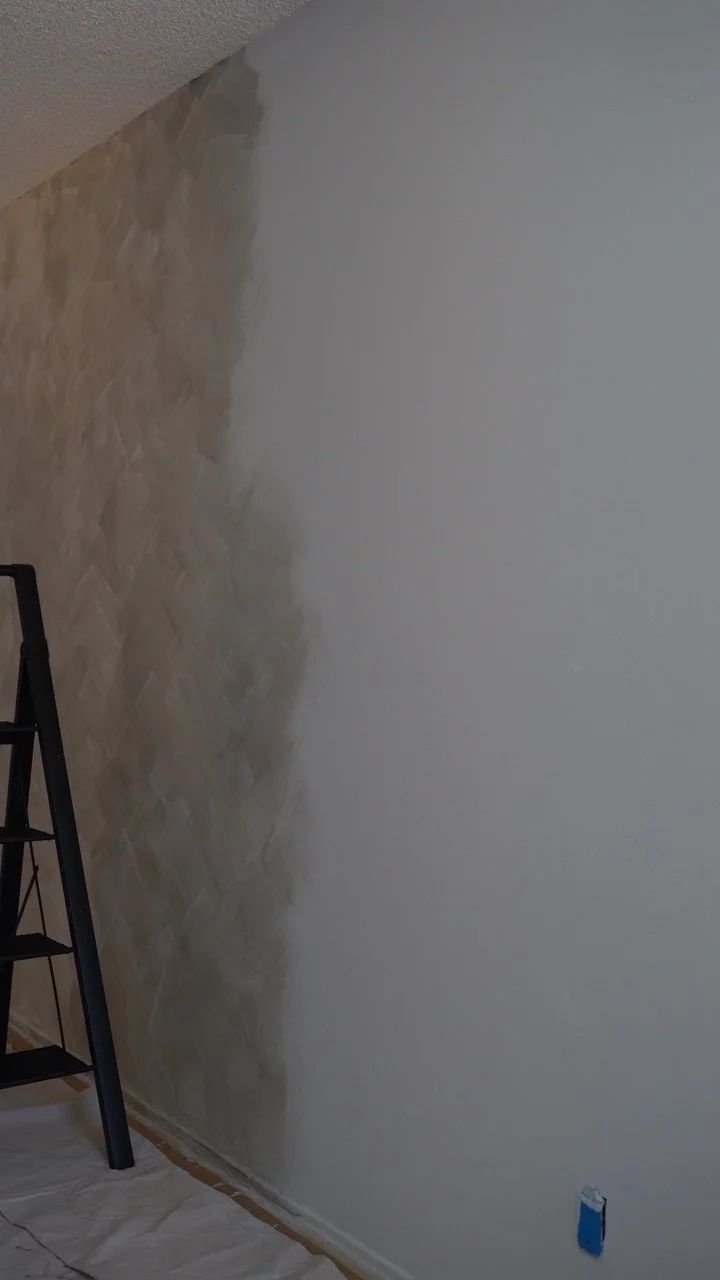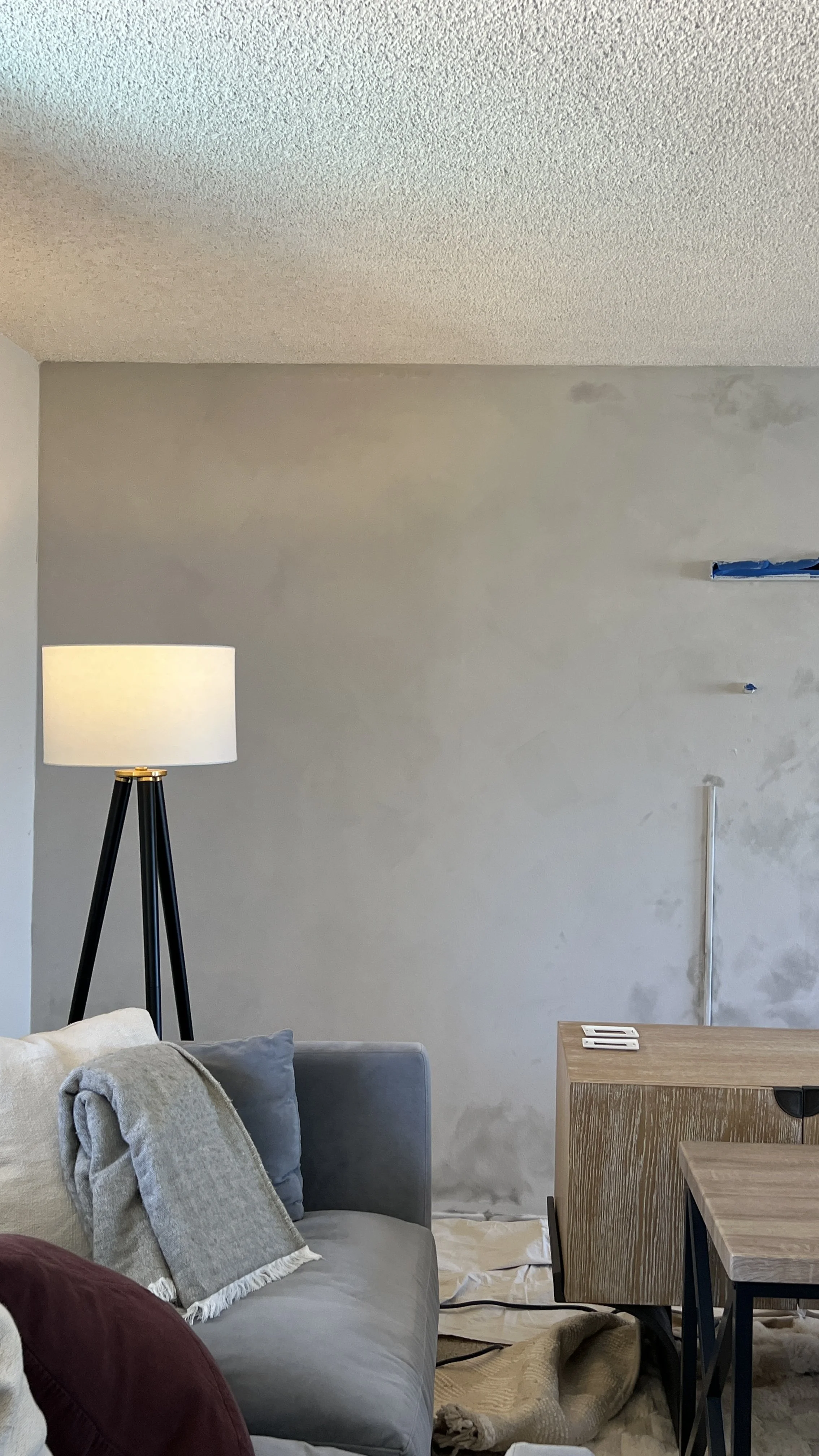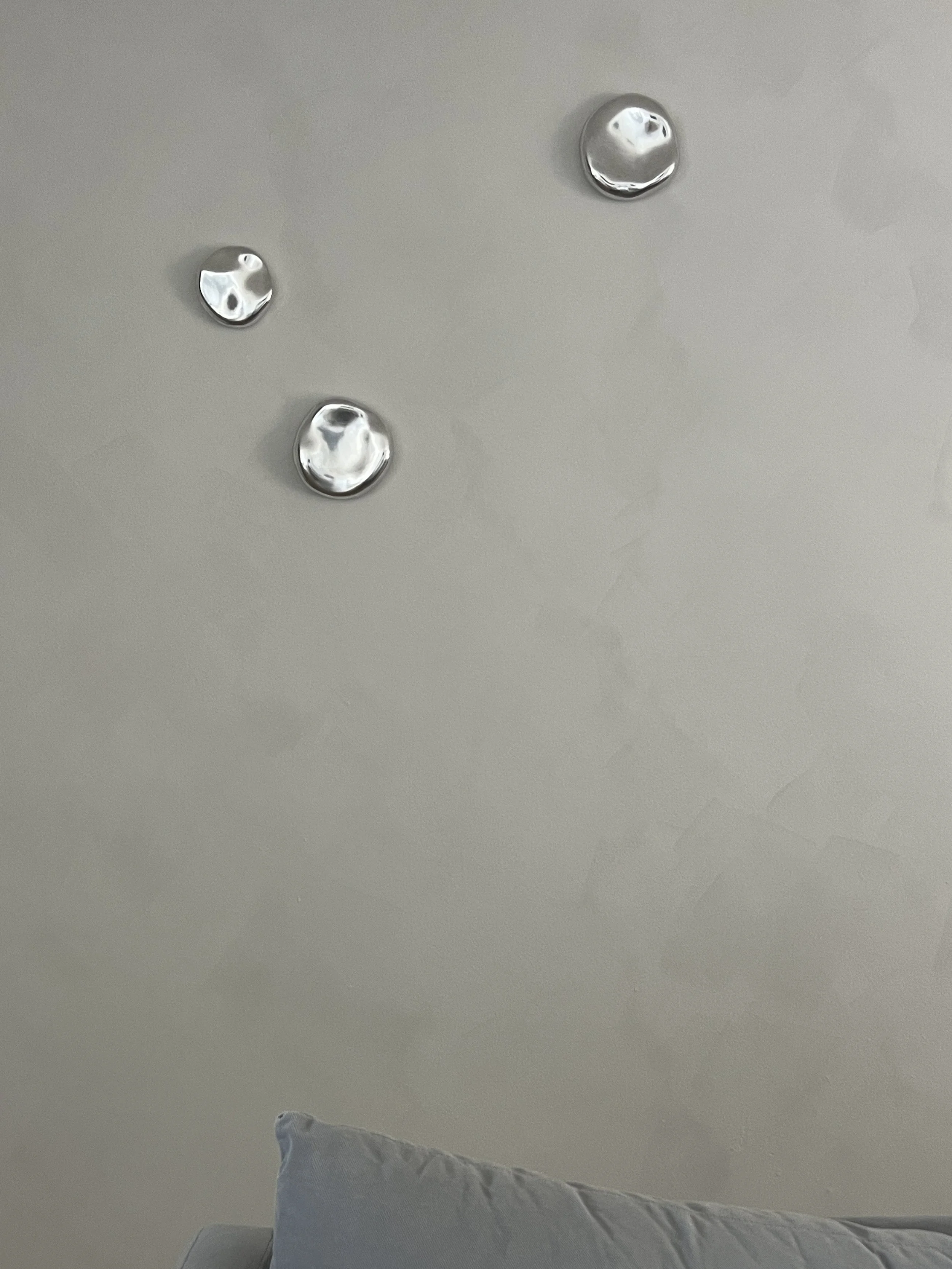Limewash Paint: Exploring the Pros + Cons
Limewash paint boasts a timeless aesthetic, leaving behind a beautiful, subtle texture. This traditional paint technique has been used for centuries, adding a classic charm to various architectural styles. The resurgence of limewash paint in the 2020s can be attributed to its ability to transcend trends, sustainability, preservation of history and desire to reconnect with nature.
In this blog post, we'll dive into the pros and cons of limewash paint, examining both its remarkable benefits and potential drawbacks.
What You Will Need:
PROCESS:
Prep your walls with painter’s tape. Remove any hardware from the walls (or wrap painter’s tape around anything that you want to avoid getting paint on), remove outlet covers and cover the receptacles with painter’s tape.
Depending on the existing foundation wall color you may need to prime the wall 1-2 times. I used the roller to cover the majority of the walls and then when in with my angled brush for smaller areas, any corners or where the wall and ceiling met.
Once the primer is fully dry to the touch apply your first coat of the limewash in a criss-cross pattern with a 5"-6” Corona Stainmore Brush or similar (to obtain that beautiful textured look). The limewash dries quickly, so you must keep a wet edge once you start the process until the wall or area is completed.
It is recommended to wait at least 24 hours in between coats for dry time. However, I had turned half of my apartment upside down with furniture stacked in the middle of the room to make this happen so I did not have the luxury of that much downtime. I personally waited for the first coat to dry and then applied the second coat with the same process as the first. It came out great, so I would say the dry time in between is a personal preference.
I highly recommend sealing the wall after all of your (or the painter’s) hard work! It does not make it fool proof by any means, but it does help prevent color fading and possible wear over time. I sealed with two coats in the kitchen area and so far, so good. Everywhere else I sealed with one coat. I used Portola Paint’s Matte Wall Sealer and it did not change the color or texture, if anything it may have slightly enhanced the brush strokes which I love.
PROS of Limewash Paint:
Aesthetic Appeal: Limewash paint exudes a unique beauty that cannot be replicated by modern paints. It creates a soft, matte finish with subtle variations in color, imparting an old-world charm to any surface. This ancient technique is especially well-suited for historical or traditional buildings, as it enhances their authenticity and architectural character.
Breathability and Durability: One of the remarkable qualities of limewash paint is its ability to allow the underlying surface to breathe. Unlike synthetic paints that create a barrier, limewash acts as a breathable, natural coating. This permeability enables moisture to escape, reducing the risk of trapped moisture, mold, or mildew. Furthermore, limewash is known for its durability, with the potential to withstand harsh weather conditions and the test of time.
Eco-Friendly and Non-Toxic: For those concerned about the environmental impact of paint, limewash is an excellent choice. It is made from all-natural materials, primarily limestone and water, without the addition of harmful chemicals. This eco-friendly composition makes it a non-toxic option, benefiting both your indoor air quality and the planet. [I painted indoors with some windows open, but could breathe without inhaling chemicals.]
Versatility and Customization: Limewash paint offers versatility in terms of its application and appearance. It can be applied to various surfaces such as plaster, brick, stone, and even wood. Depending on your selected product brand, by adjusting the dilution ratio, you can create a range of effects, from a solid, opaque finish to a more translucent, washed look. This flexibility allows you to customize the appearance to suit your personal taste and the specific design aesthetic of your space.
CONS of Limewash Paint:
Application Challenges: The technique involves multiple coats and requires careful attention to ensure even coverage. If a mistake is made or an application does not turn out as expected, you will most likely need to prime the wall and do it all over again (speaking from experience).
Limited Stain and Water Resistance: Although limewash paint has excellent breathability properties, it is not as resistant to stains and water as synthetic paints. Accidental spills or splashes may leave marks on the painted surface, and cleaning them can be challenging without affecting the paint's appearance. Therefore, it's important to consider the specific needs of your space and weigh the potential trade-offs in terms of stain
Maintenance and Touch-Ups: Due to the porous nature of limewash paint, it requires regular maintenance and occasional touch-ups. Over time, natural weathering or heavy rainfall can cause the paint to fade or wash away if applied to an exterior application, especially in areas exposed to the elements. While some may view this as a desirable aging process, others may find it difficult to maintain the appearance of the painted surfaces.
All in all I couldn’t be happier with the outcome. I honestly don’t even want to put any of the art I previously had on the walls back up! The finish is stunning and could simply be a standalone statement.

